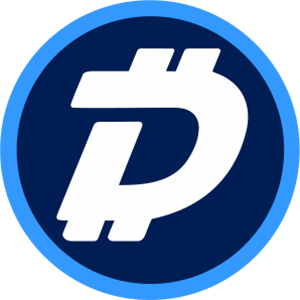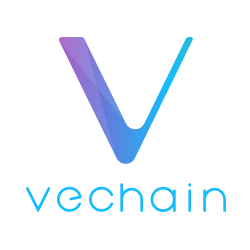The 2018 cryptocurrency market has been under the exclusive control of the bears — but behind the scenes, blockchain companies are working harder than ever to play their role in a decentralized tomorrow. For true crypto-believers, this bear market is a beautiful thing.
Many coins are down 10 times from their all-time highs, making it 10 times easier to fill their bags. Of course, the lower the price, the easier it is to accumulate 100,000 coins or more, which just feels better than holding a measly fraction of, say, Bitcoin.
That being said, relying on your feelings for investments — especially in cryptocurrency — probably isn’t a solid strategy. Before stocking your portfolio with any investment, do as much research as possible. This could change your perception of the current bear market, if it hasn’t already.
Project statistics were correct at the time of writing. The presented figures for each token are subject to their own volatility and that of the market as a whole, so be sure to check the up-to-date prices. And remember to always do your own additional research.
5 Altcoins Under 5 Cents With High Potential
IOST (IOST)

IOST Project Stats:
Token: IOST
All-Time High: $0.12
Current Price: $0.012
Market Cap: $104 million
Circulating Supply: 8,400,000,000
Total Supply: 21,000,000,000
Project Overview
The bull run of Q4 2017 has come and gone, and in its wake, blockchain companies have been working hard to keep the industry alive. Focus has shifted to mass adoption, and one of the most significant problems standing in its way is scalability.
IOST, which stands for Internet of Services Token, is setting out to solve this problem by achieving throughputs sufficient for global adoption, which also operate on a highly decentralized blockchain. In order to achieve this, the IOST team is developing a software suite to support their novel consensus algorithm, called Proof-of-Believability (PoB).
IOST Technology
The general idea of PoB is to have two types of validating nodes: one for speed (Believable Nodes), and the other to verify the integrity of the blockchain (Normal Nodes). More specifically, Normal Nodes verify the accuracy of the Believable Nodes, and if one is found to be acting dishonestly, another with a “higher believability-score” will take its place.
The rest of their infrastructure will consist primarily of protocols named Efficient Distributed Sharding, Distributed Randomness Protocol, TransEpoch, Atomix, and Micro State Blocks. All of these innovative protocols are meant to support and maintain a widely scalable blockchain solution. You can learn more about them all by reading the IOST technical whitepaper.
Developer Friendly
Like all platform coins, IOST is capable of running dapps and smart contracts on their platform. What sets the IOST blockchain apart is the allowance of multiple popular programming languages. For some context, Ethereum uses a unique code called Solidity, which restricts the amount of developers that are able to use, or are willing to learn the language.
When a developer, or a company hiring a developer, is looking for a blockchain to build their dapp with, they’ll choose the one that offers a path of least resistance to a working product. As it currently stands, companies who choose IOST will be have one of the widest sets of available blockchain developers to choose from, which could to lead to more use cases for their native token.
DigiByte (DGB)

DGB Project Stats:
Token: DGB
All-Time High: $0.12
Current Price: $0.022
Market Cap: $244 million
Circulating Supply: 10,967,622,211
Total Supply: 21,000,000,000
Project Overview
Jared Tate, entrepreneur and computer programmer, set out to improve the speed and security of Bitcoin in 2013. His answer to these problems is known as DigiByte, and its first block was mined back in January 2014. Fast forward almost 5 years, and the DigiByte core wallet has been downloaded almost 250,000 times, making it a highly decentralized alternative to Bitcoin, which has just over 10,000 nodes.
Along with the security of heavy decentralization comes a focus on speed. Bitcoin’s average block time has been hovering around 10 minutes, which takes ages compared to DigiByte’s 15 seconds. One of the reasons why DigiByte is so fast is because it runs on 5 different consensus algorithms, making DGB a serious contender moving forward.
TIme will tell which cryptos rise to the top over the next decade, and if DGB is used on a wide scale, everyday transactions are made easier compared to Bitcoin, simply because there are 1,000 times more DGB coins available, allowing users to count in whole numbers rather than decimal points.
Practical Features
Anyone with a credit card knows how important it is to get your bill paid on time. This is why credit card companies offer automatic payments, as it’s one of the truly useful features of digital money.
This idea will be available for DigiByte users, allowing businesses to schedule repeat payments for monthly expenses. They’ll also be creating an address book mobile application for Android and iOS, doing away with clunky public keys, and bringing an ease-of-use for the non-tech minds taking an interest in blockchain technology.
FundRequest (FND)

FundRequest Project Stats:
Token: FND
All-Time High: $0.26
Current Price: $0.0097
Market Cap: $422,169
Circulating Supply: 43,509,086
Total Supply: 98,611,464
Project Overview
Engineers working on open-source projects do so for a variety of reasons. Some are building their portfolio, and others simply enjoy coding. Developers can log into GitHub and start working on a project, and take pride in a sense of contribution and competence.
Of course, bills still need to be paid, and the time available for writing code within an open-source system is limited for a vast majority of developers. If there were a way to financially incentivize programmers to contribute to open-source projects, collaboration and dedication might increase, and some developers would be able to work on projects they love full time — even for the long-term.
This is what FundRequest is setting out to accomplish. For some this will equate to enough income to cover their monthly expenses. For others, work done through FundRequest will serve as a stepping stone to more lucrative job offers.
SkillToken Factory
Developers using the FundRequest platform will be rewarded with SkillTokens, which are used to measure the skill and consistency of their work. SkillTokens can be earned for solving problems with well-written code, but also for contributing well-written reviews, resolving disputes, and answering questions.
By earning SkillTokens, which are publicly displayed, developers are earning a reputation of competence for a particular skill set. It’s worth noting that SkillTokens can be integrated on different platforms, and specify the language a developer is proficient in. So if a JavaScript developer on StackExchange earns 10 SkillTokens, those tokens would apply to JavaScrpit on GitHub as well.
Binding individual open-source platforms together with incentivized developers could turn out to be incredibly useful as the demand for blockchain developers skyrockets.
Zilliqa (ZIL)

ZIL Project Stats:
Token: ZIL
All-Time High: $0.23
Current Price: $0.034
Market Cap: $266 million
Circulating Supply: 7,781,012,516
Total Supply: 12,600,000,000
Project Overview
2016 brought the very beginning of Zilliqa, and it came in the form of an academic paper written by a few founding members. Their goal was simple, yet difficult at the same time: support mass adoption with a high throughput blockchain.
Behind this academic paper, and the company that evolved from it, is a team of PhD holders and academics. Xinshu Dong, the CEO and co-founder, is a globally recognized cyber security expert who has worked on multiple projects for the Singaporean government.
Prateek Saxena is a co-founder and the Chief Scientific Officer of Zilliqa, and has served as a professor of computer science at the prestigious National University of Singapore. We won’t list all the co-founders and PhD holders in this article, but you can read more about them here.
Sharding
Zilliqa is another platform coin looking to solve the scalability problem without jeopardizing the decentralization of their blockchain. This has led them to implementing a process known as sharding, which divides the nodes into smaller, more manageable parts called shards.
In practice, Zilliqa shards are maxed out at 600 nodes, and a new one is created once this limit is reached. Each shard is useless on its own — but when combined together, a working blockchain is formed. Since the work remains evenly distributed across the network, adding participants causes an increase in throughput instead of slower transaction times.
Since the entire network gets faster as more shards are created, theoretically they’d be able to achieve an unlimited number of transactions per second. It remains to be seen how many Zilliqa shards will be created, but for now, 6 testnet shards are able to handle 2,488 transactions per second.
As businesses warm up to the idea of using blockchain technology within their corporate infrastructure, or simply accepting it as a payment, the need for fast reliable transactions will increase.
Given that Visa currently does approximately 1,667 transactions per second, Zilliqa could be a viable option for massive corporations who see the benefits of integrating cryptocurrencies.
Vechain Thor (VET)

Vechain Thor Project Stats:
Token: VET
All-Time High: $0.02
Current Price: $0.011
Market Cap: $670 million
Circulating Supply: 55,454,734,800
Total Supply: 86,712,634,466
Project Overview
Vechain Thor started as Vechain back in 2015, making it one of the older cryptos still prominent in the industry today. The Singaporean-based blockchain company performed a slight rebrand to Vechain Thor on June 30, 2018, and the upgrades that come with the rebrand allow its users to build decentralized applications on their blockchain. The rebrand also introduced a new mobile wallet that offers a variety of features, most notably an observe wallet function, and offline storage of private keys.
The team has been working within the blockchain industry longer than most, and they’ve been publishing dapps to their private chain since their inception in 2015. This direct experience has allowed them to collect insight into the problems existing in a variety of industries.
The Vechain Thor platform development is handled by the Vechain Foundation, a non-profit organization led by CEO Sunny Lu, who was also involved with the creation of Qtum. The team’s detailed experience has undoubtedly aided the impressive list of partnerships they’ve been able to create.
Partnerships
Since the creation Vechain, the company has been announcing meaningful partnerships with consistency. Among some of the most notable are:
- BMW — the German car manufacturer
- Oxford University Mathematical Institute— one of the top universities in the world
- Pricewaterhousecoopers — affiliated with 419 of the Fortune Global 500 Companies
- Bitocean— Japanese cryptocurrency ATM company
- DNV GL — internationally accredited registrar with a $2.4 billion revenue
- Chinese Tobacco Industry — counterfeit cigarettes might be solved by VechainThor
The list really does go on. For a complete look, check out this compilation by VechainInsider. For any blockchain company, once the technology is there, forming significant partnerships is the name of the game.
As more companies begin using blockchains to move their businesses forward, opportunities for cryptocurrency usage could lead to widespread reliance on distributed ledger technology. Assuming that’s the case, Vechain might be one of the most attractive coins on the market today.

